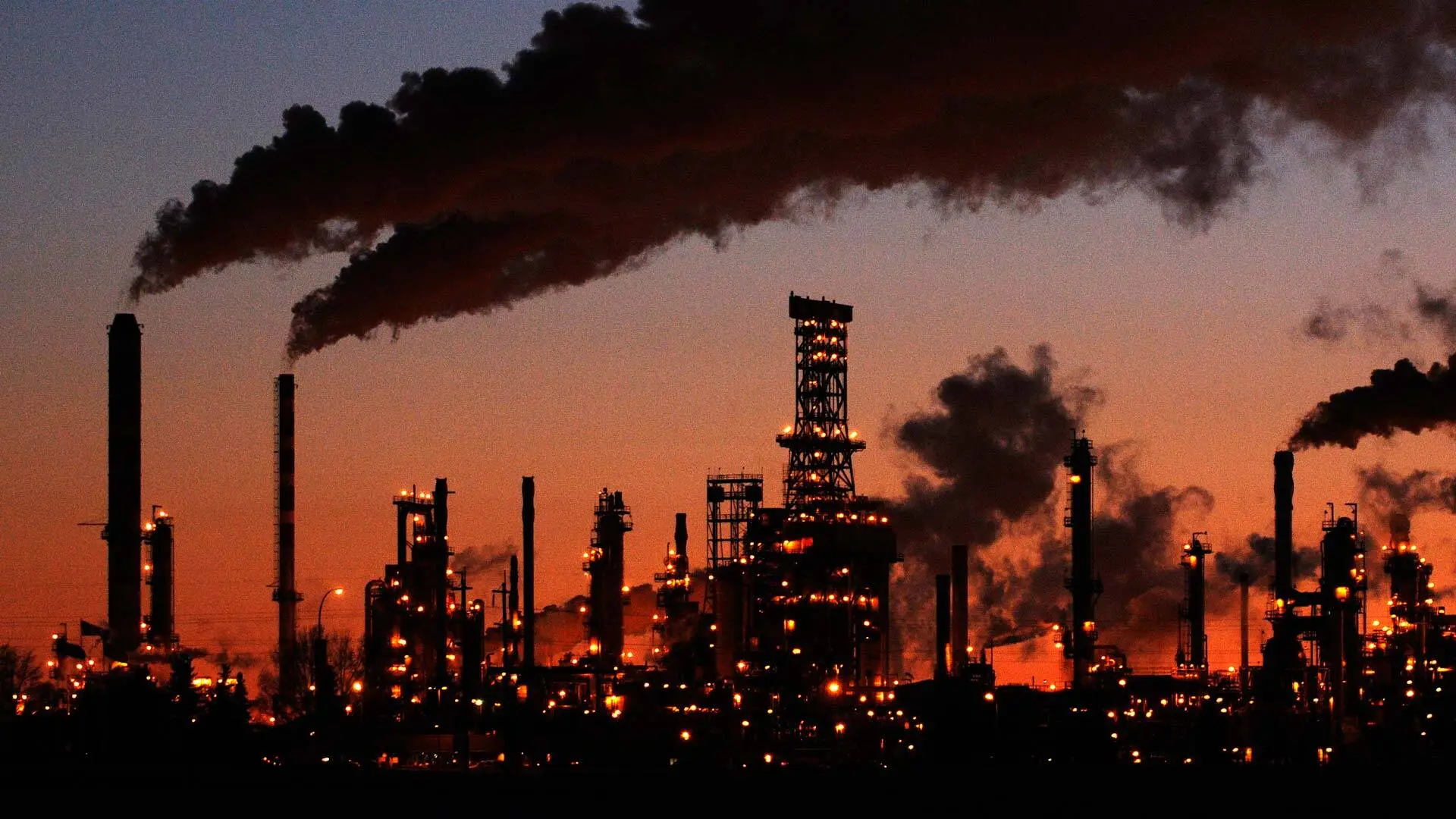Climate change represents one of the most urgent and complex challenges facing humanity today. The science is clear and consistent in its conclusions: it is crucial to keep the global temperature rise to 1.5°C to avoid dangerous and irreversible impacts. To achieve this goal, it is necessary to reduce greenhouse gas (GHG) emissions by half by 2030 and achieve net zero emissions by mid-century.
Although many countries, companies, cities and investors have announced commitments and actions to tackle climate change, unfortunately, these efforts are still far from what is needed. A report from World Resources Institute (WRI) entitled “State of Climate Action 2022” analyzed 40 indicators of actions needed to limit warming to 1.5°C by 2030 and 2050. This study revealed that none of the 40 indicators evaluated is on track to reach the 2030 targets.
Although most indicators (27) are moving in the right direction, these advances are occurring at an insufficient pace to reduce GHG emissions by half by 2030.
The world's biggest emitters, such as energy, construction, industry, transport, forests and land use, food and agriculture, are facing significant challenges in transitioning to more sustainable practices. Although there is progress in several areas, such as the expansion of renewable energy and combating deforestation, these advances are very slow to reach the established goals.
A significant increase in ambition and global action is needed to combat climate change. Governments must adopt more robust policies, investments must be directed towards clean and low-carbon technologies, and society as a whole must adopt changes in its lifestyle and consumption. International cooperation is also essential, as climate change is a global challenge that requires coordinated efforts.
As demand for electricity continues to grow globally, finding ways to meet that demand sustainably and in line with climate targets is crucial. To keep the goal of limiting global temperature rise to 1.5°C within reach, it is necessary to significantly accelerate the share of zero-carbon energy sources in electricity generation.
That is, with the right policies and the right incentives, the adoption of zero-carbon energy technologies can follow a non-linear trajectory and increase much faster than in the past. In recent years, significant advances in renewable energy technologies such as solar and wind energy, as well as energy storage solutions have been observed.
These technological advances have been driven by a combination of factors, including cost reductions, efficiency improvements, and innovations in equipment manufacturing and installation. As economies of scale are achieved and more investment is directed into these technologies, costs continue to decline, making them increasingly competitive with conventional energy sources.
Furthermore, growing awareness of the impacts of climate change and the need to reduce GHG emissions has driven the demand for clean energy. Governments and companies have adopted ambitious decarbonization targets and are implementing policies and regulations favorable to renewable energy sources. This creates an enabling environment for the rapid growth and adoption of these technologies.
The transition to a cleaner, zero-carbon energy matrix brings with it a number of benefits in addition to mitigating climate change. Generating electricity from renewable sources reduces dependence on fossil fuels, which promotes energy security and decreases energy price volatility. Furthermore, the expansion of renewable energy generates green jobs and drives sustainable economic development.
Adaptation to climate change is an urgent need to build resilience in the face of increasing climate impacts. However, for adaptation measures to be effective, it is essential to increase available funding and expand existing solutions.
Currently, climate policies in more than 170 countries recognize the importance of adaptation. However, many nations are still in the early planning stages and need to move towards effective implementation. Resilience-building measures tend to be small-scale, reactive and incremental, with a focus on immediate impacts and short-term risks. This limited approach reflects, in part, the lack of adequate funding to address adaptation challenges.
According to Intergovernmental Panel on Climate Change (IPCC), developing countries will need billions of dollars annually through 2030 and 2050 to adapt to climate change. However, currently available adaptation funds are significantly below these needs. In 2017 and 2018, adaptation funds reached just 4% and 8% respectively of needed climate finance.
However, the IPCC concluded that, with adequate support, existing and proven adaptation solutions can build resilience to climate hazards while delivering broad benefits for sustainable development.
Ecosystem-based adaptation is a promising example. This approach helps communities adapt to devastating climate impacts on their lives and livelihoods. In addition, it protects biodiversity, contributes to health, strengthens food security, generates economic benefits and strengthens carbon sequestration. Ecosystem-based adaptation measures, such as the protection, restoration and sustainable management of these systems, as well as more sustainable agricultural practices, such as integrating trees into growing areas and crop diversification, can be implemented at relatively low cost. Furthermore, it is crucial that the climate crisis is considered in preventing conflicts and establishing effective security strategies.
Climate Threats to World Peace: Addressing Challenges and Building Resilience
The climate crisis also represents an increasingly evident threat to global peace and security. Climate change has the potential to exacerbate existing tensions, increase socio-economic disparities and trigger conflicts in many parts of the world.
Climate change has significant impacts on people's living conditions, especially in regions that depend heavily on natural resources for their livelihoods, such as agriculture, fishing and water availability. Scarcity of natural resources and extreme weather events, such as prolonged droughts, floods and severe storms, can trigger territorial disputes, ethnic conflicts, forced migration and socioeconomic tensions.
A clear example of this interaction between climate change and conflict is the Sahel region of Africa, which is facing a combination of political instability, extreme poverty, drought and scarcity of natural resources. The recurrent drought and the encroachment of the Sahara desert have led to the displacement of communities, food shortages and conflicts over scarce resources, increasing tensions and violence in the region.
Furthermore, competition for natural resources such as water and fertile land can exacerbate existing conflicts and create tensions between ethnic groups or communities. In regions where governance is weak, disputes over natural resources can escalate into violent conflicts, with devastating humanitarian consequences.
Addressing the climate crisis in conflict prevention involves action at both the national and international levels. At the national level, governments must adopt policies and strategies that promote climate resilience, sustainable management of natural resources and socioeconomic equity. This can include investments in climate-resilient infrastructure, promoting sustainable agricultural practices, strengthening governance institutions and empowering local communities.
At the international level, it is essential to promote cooperation and solidarity among countries, especially those most vulnerable to climate change. International agreements such as the Paris Agreement provide an important framework for addressing the climate crisis and preventing conflict. Financial and technical support to developing countries to address climate challenges also plays a crucial role in conflict prevention.
In addition, education and public awareness of the impacts of climate change and the importance of global cooperation are key.
The United Nations (UN) recently warned of the existence of “climate hot spots” that put approximately 3.5 billion people at risk around the world. These hot spots are regions where the impacts of climate change are especially intense and pose a significant threat to the safety and well-being of local communities.
These climatic hot spots are characterized by a combination of factors, including high temperatures, prolonged droughts, sea level rise, extreme weather events, and scarcity of natural resources such as water and food. They can be found in different parts of the world, ranging from coastal areas vulnerable to floods and more intense storms, to agricultural regions affected by desertification and reduced crop productivity.
It is important to highlight that these climatic hot spots do not equally affect all regions and populations on the planet. The poorest and least developed countries and communities are the most susceptible to the impacts of climate change, due to a lack of resources and capacities to adapt and mitigate these effects.
The United Nations Security Council increasingly recognizes this connection between climate change and conflict, warning of destabilizing effects and dwindling resources. Unfortunately, the instability resulting from these challenges can serve as a breeding ground for radicalization, violent extremism, and even the emergence of terrorist groups.
The Horn of Africa region has been facing significant challenges arising from climate change, especially droughts and extreme weather events.
Despite this challenging scenario, there is a positive aspect to be considered: climate change, when compared to other risk factors for international security, has a relatively high degree of predictability. While there are still uncertainties regarding local-scale climate projections, existing climate models provide a fairly clear picture of what the future holds. This predictability provides a solid foundation for governments and societies to plan accordingly and implement mitigation and adaptation measures.
The presence of UN field missions in these countries indicates international recognition of the need to provide humanitarian assistance and promote stability in complex and vulnerable contexts. These missions aim to help protect human rights, provide humanitarian assistance, facilitate the peace process and strengthen government institutions.
However, it is important to recognize that the challenges faced by these countries go beyond the climate sphere. Poverty, inequality, weak governance, lack of access to basic services and violence are interlinked problems that need to be addressed comprehensively and thoroughly.
In addition to UN field missions, it is critical that the international community work together to support these countries, strengthening their resilience and capacity to adapt to climate change. This includes providing financial assistance, technology transfer, capacity building and strengthening of local institutions, as well as promoting global partnerships to address the complex challenges these nations face.
The climate crisis calls for an immediate and collective response to ensure that global temperature rise is kept below 1.5°C, as highlighted in the IPCC report.
In order to achieve this goal, it is essential to reach peak greenhouse gas emissions by 2025. This requires a significant transformation in energy systems, gradually reducing reliance on fossil fuels and moving to renewable energy sources.
In addition, it is of paramount importance to reduce emissions by half by 2030. This implies the adoption of sustainable practices in all sectors, including energy, transport, agriculture and industry. Technological innovation plays a crucial role in this process, encouraging the development and implementation of low-carbon and energy-efficient solutions.
Ensuring these communities have access to the resources they need to address climate challenges is a priority, thus promoting equality and inclusion in all initiatives.
From Intent to Action: Driving Change in Major Emitting Sectors to Meet the 1.5°C Target
To close the climate action gap across major emitting sectors and keep the 1.5°C target achievable, there are several actions that need to be taken this decade:
The transition to a zero-carbon energy matrix is a key step in tackling the climate crisis and keeping the 1.5°C target within reach. While there has been significant growth in the adoption of renewable energy sources in recent years, the data shows that there is still a long way to go.
Despite the increase in the use of solar and wind energy, the share of these sources in total electricity generation has not yet had a substantial impact on CO2 emissions. Electricity generation from zero-carbon sources has not changed significantly since 2000, due to continued growth in global demand for electricity.
In 2021, energy sector emissions reached an all-time high, reflecting increased use of coal and natural gas in some regions. Although the global trend shows a decline in the use of coal, in countries such as Japan, China and India, electricity generation from coal is still expanding. Furthermore, the use of natural gas continues to grow in many parts of the world.
To meet the growing demand for electricity and meet the 1.5°C target, it is necessary to accelerate considerably the increase in the share of zero-carbon sources in electricity generation. Studies indicate that it is necessary to increase by six times the current pace of growth of these sources. It is encouraging to know that, with the right policies, the adoption of zero-carbon technologies can follow a non-linear growth trajectory and accelerate rapidly.
At the same time, it is crucial to gradually reduce the share of non-emissions abatement coal in electricity generation by shutting down inefficient power plants and replacing them with renewable energy sources. It is estimated that it will be necessary to close approximately 925 medium-sized plants per year by 2030 to reach this target. In addition, the use of natural gas also needs to decrease rather than increase, as is currently the case.
Policies and incentives are needed that promote the expansion of renewable energies, the implementation of efficient energy storage technologies and the improvement of energy efficiency in all sectors.
In the construction sector, there is a need not only to improve the energy efficiency of buildings, but also to transition to zero-carbon buildings by 2030. While there are technologies available, such as heat pumps, recent efforts to decarbonize the sector have not yet been sufficient. The energy intensity of buildings has declined in previous decades, but the progression has slowed recently. Achieving the 1.5°C target requires sevenfold acceleration of energy intensity improvements in residential and fivefold in commercial buildings during this decade. In addition, it is essential to meet the remaining energy demand with low or zero carbon sources, such as electrifying operations and using renewable sources to produce electricity.
To achieve energy and carbon intensity targets in the building sector by 2030, it is crucial to increase retrofit rates of existing buildings. Currently, these rates are less than 1% per year, but need to reach 2.5% to 3.5% per year, especially in developed countries in Europe and North America. In addition, new buildings must be designed to operate without generating emissions, avoiding connection to gas networks. Building processes should also utilize circular and low-carbon materials wherever possible in order to avoid a carbon lock.
In the industrial sector, greenhouse gas emissions have increased faster than in any other sector since 2000. Electrifying industrial processes and decarbonizing the electricity supply is essential to change the trajectory of emissions. That effort needs to happen 1.7 times faster this decade. In addition, it is necessary to develop new technologies to decarbonize complex industrial operations, such as chemical processes with greenhouse gas emissions.
The transition to more sustainable transport is key to tackling greenhouse gas emissions and tackling the climate crisis. Increased vehicle ownership and the predominant use of individual transport have contributed to the continued growth of emissions in the transport sector.
Therefore, it is necessary to adopt more sustainable modes of transport, such as walking, cycling and public transport. However, recent efforts to build the necessary infrastructure, such as subway networks, light vehicle rails, BRTs (Bus Rapid Transit) and high-quality bicycle lanes, fall short of what is needed in major cities around the world. Change rates need to be accelerated by six times for public transport and more than ten times for cycle paths.
In cases where the transition to sustainable transport modes is challenging, electric vehicles (EVs) can play an important role. Fortunately, EV adoption is starting to accelerate. In 2021, the share of EVs in light vehicle sales reached almost 9%, double the previous year. Furthermore, EVs are becoming increasingly competitive with fossil fuel vehicles in many key markets. These encouraging signs suggest that the adoption of EVs for passenger transport, which needs to happen at a five times faster pace in this decade, will experience exponential changes in the coming years.
The use of electric trucks, for example, is still limited due to battery costs, although these costs are starting to come down. The share of sustainable fuels in the global aviation fuel supply was less than 0.1% in 2020, and efforts to increase this share are still in the early stages. In marine transport, zero-emissions fuels have yet to reach the commercial market, although there are several pilot projects and demonstrations underway.
Protecting and restoring ecosystems play a key role in the fight against climate change. To limit global warming to 1.5°C, it is necessary to significantly reduce deforestation, the loss of mangroves and stop peatland degradation over the next decade.
These ecosystems play a crucial role in storing carbon. Together, they store an amount of carbon equivalent to three times global emissions between 1990 and 2019. However, they are also susceptible to rapid carbon losses due to factors such as wildfires, and it takes a long time for them to fully recover. Recovering lost carbon stocks can take decades for forests, centuries for mangroves, and centuries to millennia for peat bogs.
Despite the importance of these ecosystems, global initiatives to protect them are still insufficient. Between 2015 and 2021, deforestation affected an area equivalent to the territory of Iraq, resulting in the emission of 25 gigatonnes of CO2, about 42% of global greenhouse gas emissions in 2019. Half of these losses occurred in primary moist tropical forests, which are areas of great importance for biodiversity and carbon storage. To reach the goals established for 2030, it is necessary to reduce deforestation at a 2.5 times faster pace, avoiding the deforestation of an area equivalent to the territory of Puerto Rico each year.
Furthermore, it is crucial to restore degraded ecosystems. Efforts are needed to reforest 300 million hectares of forests, recover 20 million hectares of peatlands by 2050, and restore 240,000 hectares of mangroves by 2030.
Currently, existing technologies can only remove around 0.5 million tonnes of carbon dioxide (MtCO2) per year, which is less than 1% of the amount needed to remove annually by 2030, estimated at 75 MtCO2. To achieve this target, it is necessary to significantly expand the use of carbon removal technologies, aiming to capture and permanently store an additional 7.4 MtCO2 each year.
However, both public and private investments in carbon removal technologies are increasing. This means that there is a growing awareness of the importance of these technologies and their potential to mitigate climate change. In the coming years, it is expected that several large-scale projects will be launched, further driving the development and implementation of carbon removal technologies.
These large-scale carbon removal projects can include approaches such as direct air capture, which involves capturing carbon dioxide directly from the atmosphere, and carbon capture and storage, which involves capturing carbon dioxide emitted from sources industrial plants and their subsequent underground injection and storage. In addition, reforestation and the use of sustainable agricultural practices also play an important role in carbon removal.
To accelerate the transformations needed to tackle climate change, it is essential to expand climate finance and align the financial system with the goal of limiting global warming to 1.5°C.
To reach the 1.5°C target, it is estimated that total climate finance needs to reach the mark of US$ 5.2 trillion per year by 2030. This represents an annual increase of around US$ 460 billion, which is equivalent to more than 10 times faster change than current growth rates. A rapid increase in public and private investment, from national and international sources, is needed to make this near-term goal viable.
Furthermore, it is essential that finance flows from developed countries to developing countries reach the collective target of at least US$ 100 billion per year. This goal was established and promised by developed nations by 2020, as a way to support climate actions in developing countries.
Scaling up climate finance requires innovative approaches such as green finance instruments, public-private partnerships and tax incentives for sustainable investments. In addition, it is crucial to ensure transparency and traceability of investments in order to ensure that funding is directed towards truly sustainable projects and in line with the 1.5°C target.
Financial institutions play a key role in this process. They must incorporate environmental, social and governance (ESG) criteria into their policies and investment decisions, ensuring that resources are directed towards companies and projects aligned with climate goals.
Scaling up climate finance and aligning the financial system with the 1.5°C target are essential steps to accelerate the transformations needed to combat climate change. This requires a significant increase in investments, both public and private, and meeting established funding targets, especially in relation to resource flows from developed countries to developing countries.
It is encouraging to see how solutions are already showing positive results. For example, stimulus policies such as subsidies for electric bus charging infrastructure and fleet replacement in China have resulted in a significant increase in electric bus sales worldwide. In just a few years, electric buses' share of global sales rose from 2% in 2013 to an impressive 44% in 2021.
Similarly, in Indonesia, after devastating fires, the government implemented several measures, such as a moratorium on developments in primary forests and peatlands, as well as the creation of an agency dedicated to restoration. These actions have contributed to the reduction of primary forest loss rates since 2017 and the restoration of approximately 300,000 hectares of peatlands in 2021 alone.
These examples clearly show what can be achieved when leaders in government, civil society and the private sector come together to utilize available tools and accelerate systemic transformations.
Therefore, it is essential to continue advancing towards sustainable solutions, promoting changes in social patterns and behaviors. This requires joint and collaborative action, driven by committed leaders who recognize the urgency of climate issues.




